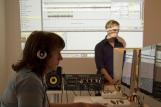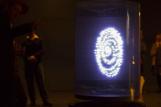1
In 1981 Video Inn hosted media theorist Gene Youngblood, an early proponent of video as an art form.This idea was explored in his 1970 book on alternative film, "Expanded Cinema". In his Vancouver lecture at Video Inn he speculated about the "video revolution":"I do not think the video revolution exists yet. But I think in the 80s itís being created and primarily because of digital video, that is to say primarily because of the integration of the computer into all electronic tools, especially video. I would like to think that by the end of this decade every electronic tool will be indistinguishable from the computer. Itís a truly universal tool that has no use or value until you program it to do something, and you can program it to do anything."
At the end of the 80s, however, digital video was still inaccessible to non-commercial markets. It would be almost a decade before the majority of B.C.ís media artists would have access to digital video. By the beginning of the 21st century, however, the revolution Youngblood called for was within sight.
In 2001, Video In initiated the annual Signal & Noise Festival of Video and Sound, marking a shift away from a purely video-centric approach. The inclusion of experimental sound projects in the festival harkened back to Matrix, where Howard Broomfield, of Experimental Audio Research (EAR) and a member of SFUís Soundscape Project, recorded the sounds of Matrix, and recalled how in the 70s there had been a collaborative effort between those fighting for radio air-time and video broadcast; between artists experimenting with videoís plastic qualities and those with sound.
The distinguishing factor in what was being termed "new media art", evident in the programming of Signal & Noise over the next decade, was the integration of computer processing with digital video, sound, animation, graphics and interactivity experiments. This development led to a rebranding of the centre in 2007: Video In became VIVO Media Arts Centre to better convey the artistic intersections occupying the collective, its membership, and international art practice.
Media centres like VIVO struggle to keep new technology in the hands of artists. The introduction of new digital formats, such as High Definition video, and ever-changing software remains a challenge. Perhaps in part in response to these demands, there has been a renewed interest in obsolete or unconventional low-tech platforms. In one VIVO workshop, for instance, artists built, and performed with, the Theremin, a 1928 electronic instrument activated by the wave of a hand. Workshop participants formed the Experimental Theremin Orchestra which continues to perform. In 2011, artist Brady Marks pioneered the POV (Persistence-of-Vision Volumetric Display) with VIVO which, while echoing the perception-altering originality of the Zoetrope, uses modern, yet relatively inexpensive LCDs to create not just the illusion of movement, but of 3D. Artists have drawn from VIVOís equipment archive for installations, performances, and production.
Similarly, the turn of the century seemed to inspire curatorial retrospection. Video In had traditionally incorporated older tapes into its programming, but curators began to look back to those early experiments in a new way after 2000. The first Signal & Noise included a screening, Here/There, took place on a bus as it cruised through East Vancouver. Referencing Video Innís 1975 Bus Tour, the curator wrote that it "pays tribute to this early Video In initiative and inverts it from a 21st C perspective."
Re-examinations of the Archiveís contents continue, including in 2012, with the exhibition series and book "Anamnesia: Unforgetting." In one essay the curators posit, "Why are we compelled by the archive -specifically the first decade of SVESí consciousness - and why now?" VIVO Programming Coordinator and essay writer,Amy Kazymerchyk, answers this way:
"Our movements are the collaborations we have united in, the discursive and aesthetic projects we have contributed to at VIVO, and the conversations we have taken up with concentric communities. Weíve come together now, in the second decade of the twenty-first century. We look to movements of the past, in this case the work and culture that artists, activists and cultural workers from SVESí early history were producing, because we imagine our time here as part of a continuum of friendships, practices and commitments."
Sources:
Crista Dahl Media Library & Archive
"Making Video 'In'", Editor Jennifer Abbott, Video In Studios, 2000.
"Anamnesia: Unforgetting", Editor Amy Kazymerchyk, VIVO Media Arts Centre, 2013.
3
Emma Hendrix: SVES as a place for experimentation in the 20th and 21st century2013
VIVO Media Arts Centre, 1965 Main Street, Vancouver, British Columbia, Canada
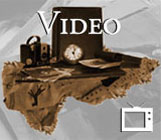 Credits:
Credits:Interviewer: Kevin Doherty, Karen Knights
Cameraperson: Kevin Doherty
Editor: Kevin Doherty
Transcription: Janet Miller
4
Signal & Noise 2001: promotional card2001
Video In, 1965 Main Street, Vancouver, British Columbia, Canada
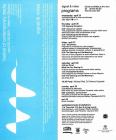
5
Frederick Brummer installation, Signal & Noise 201125 June 2011
VIVO Media Arts Centre, 1965 Main Street, Vancouver, British Columbia, Canada
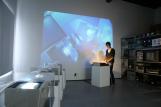
6
Frederick Brummer Installation, Signal & Noise 201125 June 2011
VIVO Media Arts Centre, 1965 Main Street, Vancouver, British Columbia, Canada
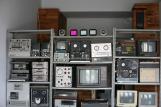
7
Paper House, Lief Hall30 March 2012
VIVO Media Arts Centre, 1965 Main Street, Vancouver, British Columbia, Canada
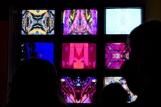
8
Eden Veaudry, Joining the Periphery28 July 2012
VIVO Media Arts Centre, 1965 Main Street, Vancouver, British Columbia, Canada
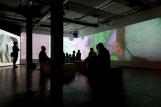
9
Peg Campbell: Artists as innovators2013
VIVO Media Arts Centre, 1965 Main Street, Vancouver, British Columbia, Canada
 Credits:
Credits:Interviewer: Kevin Doherty
Cameraperson: Anna MacDonald
Editor: Kevin Doherty
Transcript: Kevin Doherty
11
P.O.V. Beyond the 2nd Dimension Exhibit1 November 2012
VIVO Media Arts Centre, 1965 Main Street, Vancouver, British Columbia, Canada
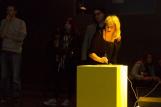
12
The Vancouver Experimental Theremin Orchestra (VETO)2011
VIVO Media Arts Centre, 1965 Main Street, Vancouver, British Columbia, Canada
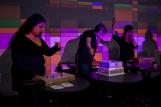
13
SLAB 6: Expanding the Theremin Exhibition18 May 2012
VIVO Media Arts Centre, 1965 Main Street, Vancouver, British Columbia, Canada
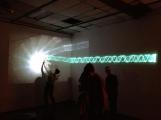
14
VIVO Media Classroom2012
VIVO Media Arts Centre, 1965 Main Street, Vancouver, British Columbia, Canada
